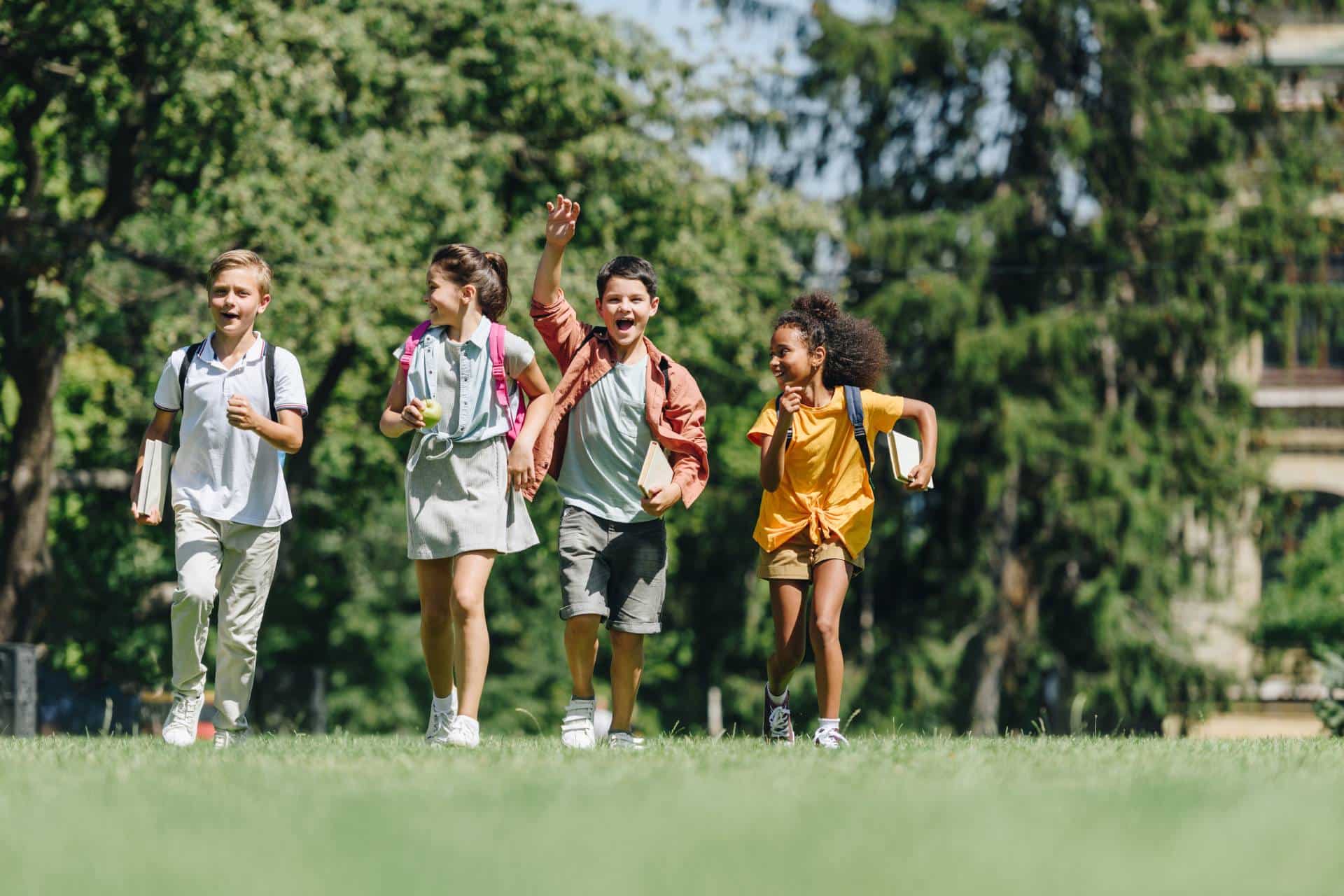On a chilly May morning, Peninsula Primary in Te Atatū was thrust into chaos when a naked intruder appeared on school grounds. Just days later, multiple Papakura schools went into lockdown after a serious assault occurred nearby.
These incidents, while shocking, are no longer outliers. Instead, they signal a sobering trend: school lockdowns and emergency events are becoming the “new normal” for Kiwi schools, students, and their communities.
As the frequency of these emergencies increases, so too does the need for robust, reliable communication strategies. At the forefront of this movement is Sharlene Barnes, CEO and founder of Skool Loop, a school community communications app born from crisis and now trusted by over 1,300 schools across New Zealand and Australia.
“What was once considered an extraordinary emergency is now a regular occurrence that schools, parents, and communities face,” says Sharlene Barnes, the Kaikoura-based CEO and founder of school community communications app, Skool Loop. Today, schools must be prepared for a range of security threats, natural disasters, and other critical incidents that require swift and coordinated responses.
Reliable, real-time communication is key
When crises unfold, the priority is clear: get accurate information to everyone who needs it, as quickly as possible. In the digital age, this means more than just a phone tree or a note sent home. It means instant push notifications to mobile devices, real-time updates on school websites, and multiple channels of communication that reach not just parents, but the entire school community.
“When an emergency happens, you don’t want to be scrambling to get information out. It’s a safety issue, of course, but it’s also a tremendous source of stress and anxiety for the entire community.
Parents, grandparents, local businesses—everyone connected to that school—needs to know what’s happening, and they need to know as soon as possible.”
“When crisis situations unfold, the priority is getting accurate information to everyone who needs it as quickly as possible,” says Barnes. “So, when an emergency happens, you want the ability to instantly push mobile notifications to their entire community, as well as to present up-to-the-minute information on the homepage of the school website, because that’s where people will be looking to find out what’s happening.”
From personal trauma to national solution
Barnes’s passion for effective school communication is deeply personal. During the 2011 Christchurch earthquake, she experienced first-hand the terror of not knowing whether her son was safe. Communication systems failed, and she was forced to run barefoot and through dangerous conditions to reach his school.
Determined that no other Kiwi parent should face such uncertainty, Barnes developed the Skool Loop app. The platform was designed from the ground up to ensure that critical information could be delivered instantly and reliably, even when traditional communication channels were disrupted.
Including the whole whānau
One of the most significant lessons from recent emergencies is that communication must extend beyond just parents. Modern family structures are diverse, and caregivers often include grandparents, aunties, uncles, and even neighbors.
“Our app is open to the whole community, not just the small community of parents,” says Barnes. “This includes aunties, uncles, grandparents—everyone. It reflects the realities of modern families and communities.”
Free for all New Zealand schools
School budgets are under increasing pressure, forcing principals to make tough decisions about resource allocation. Recognizing this, Skool Loop is offered free to all New Zealand schools, ensuring that even small rural schools with limited budgets can access world-class emergency communication tools.
“When every dollar counts in a school’s budget, you shouldn’t have to pay three or four thousand dollars for communication with your community,” Barnes notes. “That’s why we provide Skool Loop free to all New Zealand schools.”
 Understanding lockdowns
Understanding lockdowns
A lockdown is a safety procedure designed to protect students and staff in the event of an immediate threat inside or near the school grounds. This could include an intruder, a violent incident, a nearby police operation, or a natural disaster such as an earthquake or severe weather event.
Under the Education and Training Act 2020, the school board must ensure that the school is a physically and emotionally safe place for all students and staff.
An emergency plan for the workplace is required under the Health and Safety at Work (General Risk and Workplace Management) Regulations 2016
The goal of a lockdown is to create a secure environment by restricting movement, securing all access points, and keeping everyone out of sight until the threat has passed or emergency responders arrive.
Step 1: Preparation: Planning and Training
Before a lockdown ever happens, schools must have a clear, well-communicated emergency management plan that includes lockdown procedures. This plan should be developed in consultation with local police, emergency services, and the school community.
Key preparation steps include:
· Developing a lockdown protocol: The plan should clearly outline who has the authority to initiate a lockdown, how the lockdown signal will be communicated, and the specific actions staff and students must take.
· Training staff and students: Everyone in the school community needs to understand the lockdown procedures. This includes teaching staff how to secure classrooms, how to communicate during an emergency, and how to support students emotionally.
· Conducting regular drills: Practising lockdown drills helps ensure that everyone knows what to do instinctively. Drills should be realistic but sensitive to students’ emotional well-being.
· Communication systems: Schools should have reliable communication tools, such as intercom systems, alarms, and emergency apps (like Skool Loop), to quickly notify staff and parents.
Step 2: Initiating the Lockdown
When a threat is identified, the principal or designated senior staff member will initiate the lockdown. This decision may be based on direct observation, a report from staff or students, or advice from police or emergency services.
How the lockdown is initiated:
· Signal: Schools often use a specific alarm sound, a code word over the PA system, or a voice announcement to signal a lockdown. This signal must be unmistakable and known to all staff and students.
· Immediate action: Upon hearing the lockdown signal, all staff and students must act quickly and calmly to secure their location.
Step 3: Securing the School Environment
Once the lockdown is initiated, the immediate priority is to make the environment as secure as possible.
What staff and students need to do:
· Lock all doors and windows: Ensure that classroom and office doors are locked immediately to prevent unauthorised entry. Windows should also be secured.
· Close blinds or curtains: This prevents anyone outside from seeing inside and helps keep students out of sight.
· Turn off lights: If safe and practical, turning off lights can make rooms appear unoccupied.
· Move away from doors and windows: Students and staff should sit quietly on the floor or under desks, staying out of sight.
· Stay silent: Silence is crucial for avoiding attention. No talking, no phone calls, and no opening doors for anyone except emergency responders.
· Account for all students: Teachers should quickly ensure all students are present and accounted for, including those who may be in bathrooms or hallways.
Step 4: Managing Students and Staff Outside the Classroom
Lockdowns can happen at any time, including during breaks, physical education classes, or when students are outside.
Procedures for those outside the classroom:
· Move to the nearest safe location: Students and staff outside classrooms should move quickly but calmly to the closest secure room or designated safe area.
· Follow staff instructions: Teachers or supervisors must lead students to safety and ensure they follow lockdown protocols.
· If unable to reach a safe room, students should find a place to hide, stay low, and remain silent until the lockdown ends.
Step 5: Communication During Lockdown
Clear communication is vital during a lockdown, but it must be controlled and secure.
Staff should use internal communication systems to update the principal or emergency coordinator. Teachers should reassure students quietly and keep them calm.
Parents and caregivers should be informed as soon as it is safe to do so, but only by official channels. Schools should use multiple communication platforms—such as SMS alerts, emails, and apps like Skool Loop—to provide timely and accurate updates.
Parents should be advised not to call or come to the school during the lockdown, as this can interfere with emergency operations and put more people at risk.
Step 6: No Entry or Exit During Lockdown
During the lockdown, no one is allowed to enter or leave the school buildings except emergency responders.
This includes parents, visitors, and even staff who are not in a secure location. The school gates and entrances should be monitored and secured to prevent unauthorised access.
Step 7: The “All Clear” Signal
A lockdown ends only when the principal or emergency services give the official “all clear” signal.
This may be a specific alarm, an announcement over the PA system, or a message through the school’s communication app.
Staff and students should remain in lockdown positions until this signal is received.
Step 8: Post-Lockdown Procedures
Once the lockdown is lifted, schools must carefully manage the transition back to normal activities.
Steps after lockdown:
· Account for everyone: Teachers and staff should conduct roll calls to ensure all students are accounted for and safe.
· Debrief: Staff and students may need to discuss the event, ask questions, and express their feelings.
· Provide support: Schools should offer counselling or psychological support to those affected by the lockdown.
· Communicate with parents: Inform parents that the lockdown has ended and provide guidance on when and how students will be dismissed.
· Review and improve: School leadership should review the lockdown response to identify strengths and areas for improvement.





